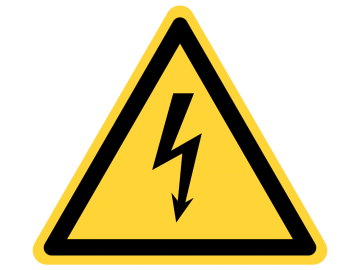Electrical safety outdoors
Learn how to stay safe around power lines with a sing-along song, a fun game, and a school bus colouring sheet.
- Grades K, 1
- 3 activities
- 1.3 hours

Big idea
Applied Design, Skills and Technologies K & 1
Skills can be developed through play.
Physical and Health Education K & 1
Knowing about our bodies and making healthy choices helps us look after ourselves.
Arts Education K & 1
Dance, drama, music, and visual arts express meaning in unique ways.
English Language Arts K & 1
Stories and other texts can be shared through pictures and words.
Mathematics K & 1
Objects have attributes that can be described, measured, and compared.
Learning objectives
Students will be able to:
- Respond safely to electrical safety hazards like downed power lines
- Understand how to move safely away by shuffling their feet
- Learn to estimate a distance of 10 metres and move safely away from downed power lines
Activities

Safety sing-along
Learn how to spot the dangers and stay safe around power lines.

Safe or unsafe?
Spot dangerous situations around power lines and shuffle to safety.
BC curriculum fit
Grade K & 1
Applied Design, Skills and Technologies
Big ideas
- Skills can be developed through play
Curricular competencies
Applied skills
- Use materials, tools, and technologies in a safe manner in both physical and digital environments
- Develop their skills and add new ones through play and collaborative work
Applied technologies
- Explore the use of simple, available tools and technologies to extend their capabilities
Arts Education
Big ideas
- Dance, drama, music, and visual arts express meaning in unique ways
Content
- Visual arts: elements of design: line, shape, texture, colour; principles of design: pattern, repetition
Curricular competencies
Exploring and creating
- Explore elements, processes, materials, movements, technologies, tools, and techniques of the arts
English Language Arts
Big ideas
- Stories and other texts can be shared through pictures and words.
Curricular competencies
Comprehend and connect
- Use sources of information and prior knowledge to make meaning
- Use developmentally appropriate reading, listening and viewing to make meaning
Mathematics
Big ideas
- Objects have attributes that can be described, measured, and compared
Curricular competencies
Reasoning and analyzing
- Estimate reasonably
Understanding and solving
- Develop, demonstrate, and apply mathematical understanding through play, inquiry, and problem solving
- Visualize to explore mathematical concepts
Physical and Health Education
Content
- Hazards and potentially unsafe situations
Curricular competencies
Social and community health
- Identify and describe a variety of unsafe and/or uncomfortable situations
Assessments
The activities in this unit provide an opportunity to assess individual students and groups on their ability to:
- Identify safe and dangerous situations around power lines
- Learn Down. Danger. Dial 911 in response to a hazard like a downed power line
- Learn how to shuffle away from a downed power line to at least 10 metres in distance
- Estimate a 10 metre distance
Background info
Electrical safety tips around power lines
- Don't climb on power poles
- Never fly kites near power lines
- Stay away from broken or fallen power lines
- Never touch or climb trees that are near power lines
- Never touch big, metal transformer boxes with warning signs
- Obey warning signs
- Stay away from substations and power lines
Electrical safety, electricity and power lines
Power lines are conductive, meaning the electrical current runs through them with the least resistance. However if something makes contact with a live power line like a tree, kite, or ladder, the electrical current may flow to the ground. The place where the current touches the ground is the highest voltage and from that point the electrical current spreads out in irregular concentric circles. The voltage or electrical intensity decreases as it moves further from the source. A safe distance from the source of contact, like a downed power line, is 10 metres or more.
Electricity has the ability to find its way through touch to get to the ground. If a kite gets tangled in a power line, the electrical current could travel through the kite and you to reach the ground. Birds do not get zapped when standing on a power line, however they would if they straddled two power lines, or touch their beak to the ground while standing on the power line.
If there is a power line on the ground, you need to move away from the source (where it touches the ground). However electricity has the ability to move through your body as you step away from the source of electricity. As electrical current flows through the ground the voltage decreases in concentric rings or ripples as you move further from the source. So, if you move away by lifting one foot, the change in voltage between the concentric rings can travel up one leg and down the other. Instead by keeping your legs together and shuffling your feet, the electrical current will stay in the ground. 10 metres is the safe distance calculated based on the voltage in the power lines here in B.C.


